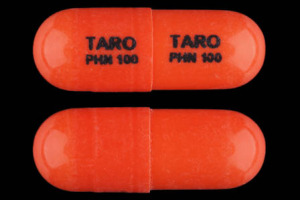Phenytoin Interactions
There are 850 drugs known to interact with phenytoin, along with 12 disease interactions, and 1 alcohol/food interaction. Of the total drug interactions, 242 are major, 563 are moderate, and 45 are minor.
- View all 850 medications that may interact with phenytoin
- View phenytoin alcohol/food interactions (1)
- View phenytoin disease interactions (12)
Most frequently checked interactions
View interaction reports for phenytoin and the medicines listed below.
- Acetylsalicylic Acid (aspirin)
- Advair Diskus (fluticasone / salmeterol)
- Aspirin Low Strength (aspirin)
- Ativan (lorazepam)
- Combivent (albuterol / ipratropium)
- Coumadin (warfarin)
- Cymbalta (duloxetine)
- Eliquis (apixaban)
- Fish Oil (omega-3 polyunsaturated fatty acids)
- Keppra (levetiracetam)
- Lantus (insulin glargine)
- Lasix (furosemide)
- Lexapro (escitalopram)
- Lipitor (atorvastatin)
- Lyrica (pregabalin)
- Metoprolol Succinate ER (metoprolol)
- Metoprolol Tartrate (metoprolol)
- MiraLAX (polyethylene glycol 3350)
- Neurontin (gabapentin)
- Nexium (esomeprazole)
- Paracetamol (acetaminophen)
- Plavix (clopidogrel)
- Seroquel (quetiapine)
- Synthroid (levothyroxine)
- Tylenol (acetaminophen)
- Vimpat (lacosamide)
- Vitamin B12 (cyanocobalamin)
- Vitamin C (ascorbic acid)
- Vitamin D2 (ergocalciferol)
- Vitamin D3 (cholecalciferol)
Phenytoin alcohol/food interactions
There is 1 alcohol/food interaction with phenytoin.
Phenytoin disease interactions
There are 12 disease interactions with phenytoin which include:
- blood dyscrasias
- liver disease
- porphyria
- renal dysfunction
- cardiotoxicity
- suicidal tendency
- arrhythmias
- hyperglycemia
- megaloblastic anemia
- osteomalacia
- alcoholism
- thyroid function tests
More about phenytoin
- phenytoin consumer information
- Compare alternatives
- Pricing & coupons
- Reviews (115)
- Drug images
- Side effects
- Dosage information
- During pregnancy
- Drug class: hydantoin anticonvulsants
- Breastfeeding
Related treatment guides
Drug Interaction Classification
| Highly clinically significant. Avoid combinations; the risk of the interaction outweighs the benefit. | |
| Moderately clinically significant. Usually avoid combinations; use it only under special circumstances. | |
| Minimally clinically significant. Minimize risk; assess risk and consider an alternative drug, take steps to circumvent the interaction risk and/or institute a monitoring plan. | |
| No interaction information available. |
Further information
Always consult your healthcare provider to ensure the information displayed on this page applies to your personal circumstances.


